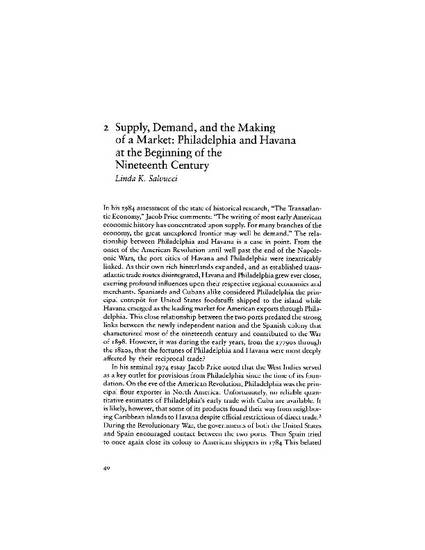
In his 1984 assessment of the state of historical research, "The Transatlantic Economy," Jacob Price comments: "The writing of most early American economic history has concentrated upon supply. For many branches of the economy, the great unexplored frontier may well be demand." The relationship between Philadelphia and Havana is a case in point. From the onset of the American Revolution until well past the end of the Napoleonic Wars, the port cities of Havana and Philadelphia were inextricably linked. As their own rich hinterlands expanded, and as established transatlantic trade routes disintegrated, Havana and Philadelphia grew ever closer, exerting profound influences upon their respective regional economies and merchants. Spaniards and Cubans alike considered Philadelphia the principal entrepôt for United States foodstuffs shipped to the island while Havana emerged as the leading market for American exports through Philadelphia. This close relationship between the two ports predated the strong links between the newly independent nation and the Spanish colony that characterized most of the nineteenth century and contributed to the War of 1898. However, it was during the early years, from the l779os through the 1820s, that the fortunes of Philadelphia and Havana were most deeply affected by their reciprocal trade.
